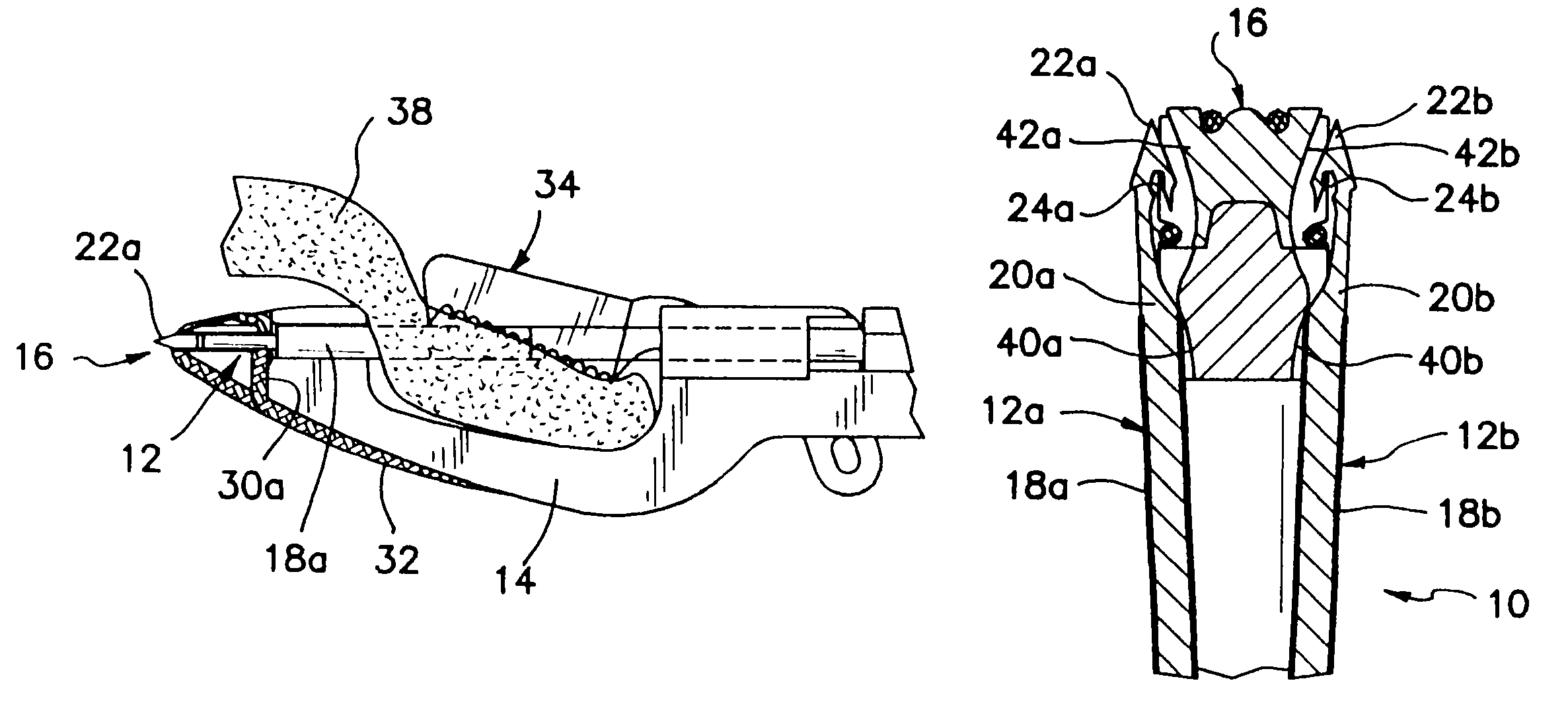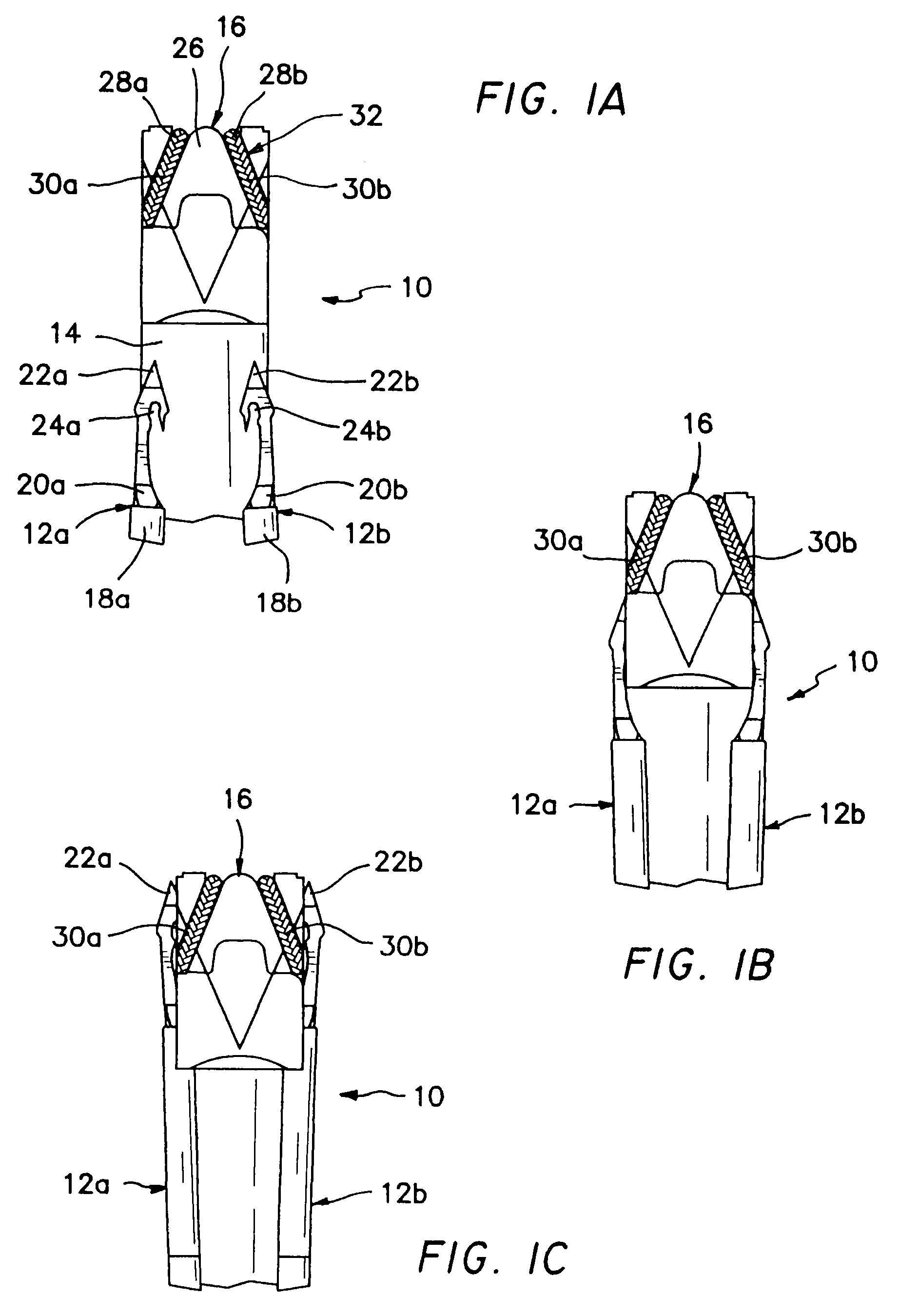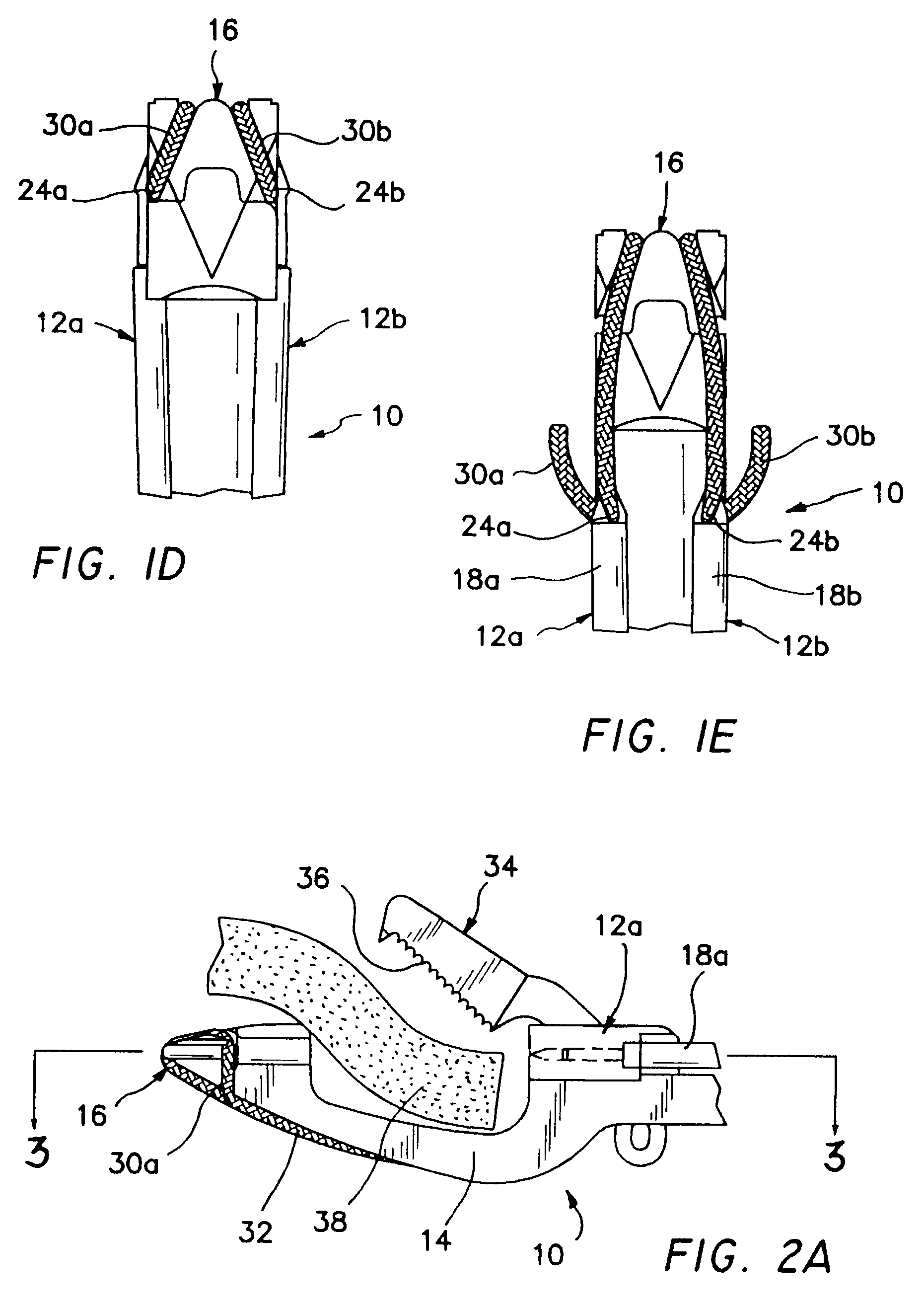Suture capture device
a technology of suture capture and rotator cuff, which is applied in the field of arthroscopic repair of the tom rotator cuff, can solve the problems of severe limitation, time-consuming suture capture aspect, and limited instrumentation disclosed by mulhollan et al., and achieve the effect of preventing unnecessary damage to the body tissu
- Summary
- Abstract
- Description
- Claims
- Application Information
AI Technical Summary
Benefits of technology
Problems solved by technology
Method used
Image
Examples
Embodiment Construction
[0040]The present invention relates to a method and apparatus for the arthroscopic repair of tom tissue and bone at a surgical repair site using an inventive device which is a combination tissue grasper and suture placement device. Although the present invention is described primarily in conjunction with the repair of a tom rotator cuff, the apparatus and method could also be used in arthroscopic repair at other sites, such as the knee, elbow, hip surgery, and for other surgical techniques for securing suture in the soft tissues of the body.
[0041]A description of the basic functional elements of suture capture and retrieval, in accordance with the principles of the invention, follows.
[0042]Referring to FIGS. 1A through 1E, there may be seen a plan view of the distal end of a suturing device 10 that includes a pair of needles 12a and 12b, a lower jaw 14, and a suture cartridge 16. The needles 12a, 12b further include sliding tubes or sheaths 18a and 18b, needle shafts 20a and 20b, ne...
PUM
 Login to View More
Login to View More Abstract
Description
Claims
Application Information
 Login to View More
Login to View More - R&D
- Intellectual Property
- Life Sciences
- Materials
- Tech Scout
- Unparalleled Data Quality
- Higher Quality Content
- 60% Fewer Hallucinations
Browse by: Latest US Patents, China's latest patents, Technical Efficacy Thesaurus, Application Domain, Technology Topic, Popular Technical Reports.
© 2025 PatSnap. All rights reserved.Legal|Privacy policy|Modern Slavery Act Transparency Statement|Sitemap|About US| Contact US: help@patsnap.com



